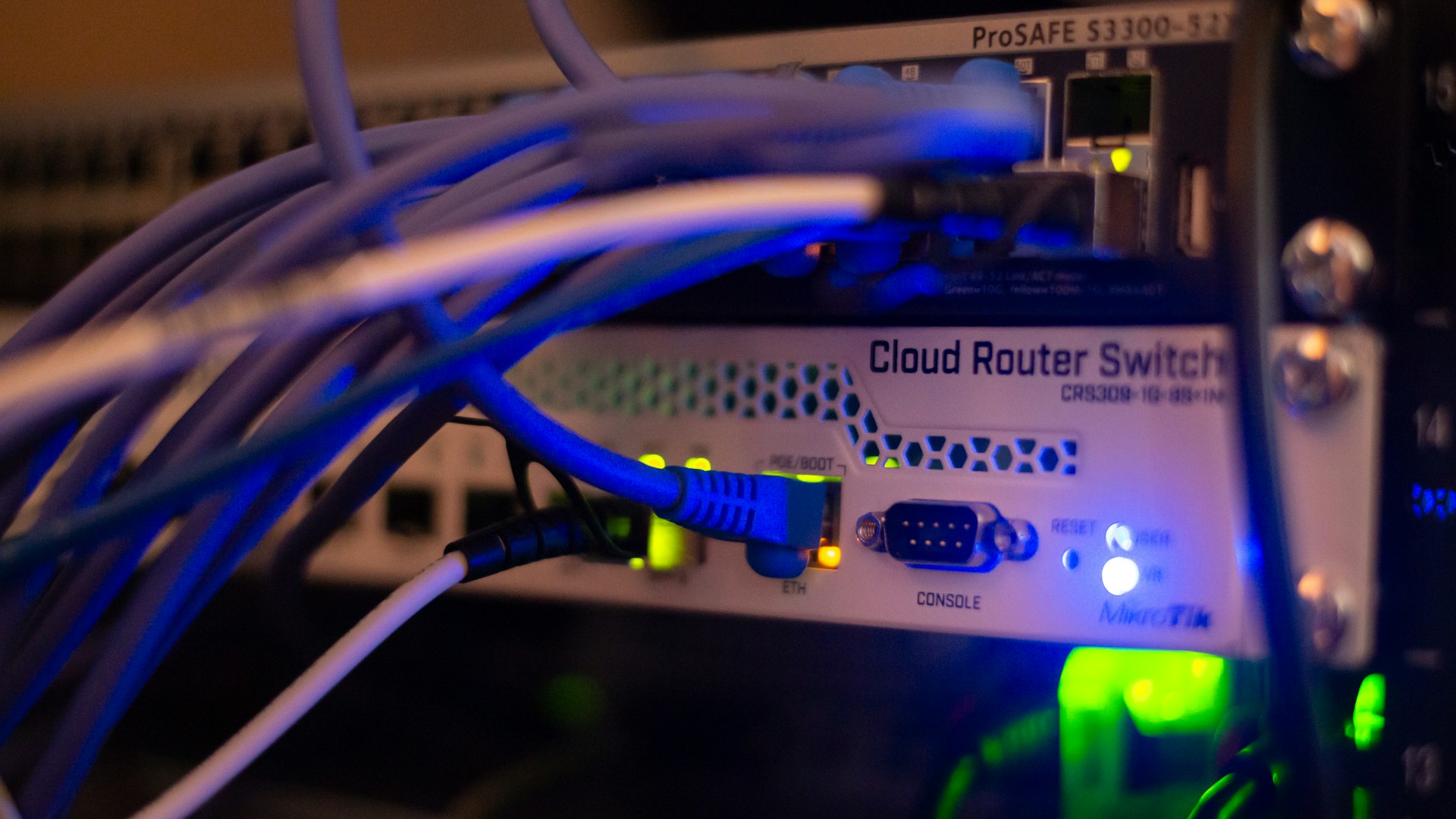Key Differences Between GEA And EFM Under Leased Line Connectivity
-
April 23, 2024
-
7 min read

A high-speed and secure internet connection has become the basic requirement for businesses of every type or size. For a business that has to be functional every day, you can’t let your inefficient internet connection blow it down.
A robust digital infrastructure has become a prerequisite for the seamless operation of any business. Investing in an efficient internet connection is a must. A cost-effective, reliable, and swift internet connectivity is critical for optimal business performance.
Moreover, businesses require a symmetric connection when they need to host applications. Choosing the best connectivity solution that best meets business requirements can be fraught with dilemma. Many businesses are at a loss while choosing between the two contenders, EFM (Ethernet First Mile) or GEA (Generic Ethernet Access).
Reading through the lines of this article will let you know the key differences and help you make a perfect pick for your business.
Introduction to GEA vs EFM in leased line connectivity
Businesses seeking reliable and high-bandwidth internet connectivity often face a choice between GEA and EFM. Both offer leased line connections but differ in technology and reach.
GEA utilizes existing fibre optic infrastructure, potentially providing faster speeds and wider availability. EFM, on the other hand, leverages copper lines. This makes it potentially more cost-effective but with potentially limited reach and speed.
The right option depends on budget, bandwidth needs, and geographic location. This article dives into the specifics of GEA and EFM to help you make an informed decision.
The underlying architecture of GEA and EFM
Understanding GEA
Generic Ethernet Access offers a cost-effective alternative to traditional leased lines for small businesses. It leverages existing fiber or copper infrastructure to reach your business cabinet. This reduces installation costs significantly.
Unlike crowded broadband, GEA utilizes dedicated Ethernet connections. It delivers reliable, symmetrical speeds (2-20 Mbps) for both uploads and downloads. This leased line broadband connection is ideal when your business doesn’t require many data-hungry applications.
Key benefits of GEA:
- Affordable: Lower setup and ongoing costs compared to full Fiber Ethernet.
- Fast and reliable: Dedicated connections with guaranteed uptime (usually >99%) and fast resolution times for any issues.
- Quick installation: Typically within 10 business days.
- Uncontended: Your business is the only one on the line. This ensures consistent performance during peak hours.
GEA is great for businesses seeking a reliable and affordable high-speed internet connection.
Understanding EFM
Ethernet First Mile offers businesses a flexible alternative to traditional fibre optic connections. It utilizes existing copper phone lines to connect your business to the local fibre network and then back to the provider’s central network. This provides a reliable connection with uptime exceeding 99.9% and quick repair times.
EFM offers scalability, with speeds ranging from 2 to 35 Mbps, depending on the number of copper pairs used. This allows businesses to adjust their bandwidth as their needs evolve. Due to the potential distance covered, EFM installation times can be longer, and upfront costs are higher. However, EFM boasts lower ongoing costs compared to other leased lines.
Architectural differences between GEA and EFM
- GEA uses existing fibre optic cables, but EFM offers more options. EFM uses standard phone wires to link your business to the local fibre network and back to the provider’s main network.
- EFM is reliable, typically having near-constant uptime and quick repairs. Speeds vary based on the number of wires used, ranging from 2 to 35 Mbps, and can be adjusted as your business grows. On the other hand, GEA offers speeds of 2 Mbps to 20 Mbps
- While installation can take up to 45 days and is expensive due to the long distances involved, EFM has lower ongoing costs than other dedicated internet lines.
The bandwidth capabilities of GEA and EFM
Since GEA leverages existing fibre infrastructure, it boasts impressive speeds. It can deliver symmetrical bandwidth, meaning upload and download speeds are equal. The speed typically ranges from 10 Mbps to 1 Gbps. This offers consistent performance that is ideal for applications like video conferencing and cloud storage.
EFM, while not as fast, provides flexibility. Its bandwidth depends on the number of copper pairs used, ranging from 2 Mbps to 35 Mbps. This makes it scalable, allowing businesses to adjust bandwidth as needed. However, EFM’s asymmetrical nature means upload speeds might be lower than download speeds. This may not be ideal for applications requiring high upload bandwidth.
Therefore, GEA offers superior raw speed and symmetrical bandwidth, while EFM prioritizes flexibility and scalability with customizable bandwidth options. Choose the option that best aligns with your specific needs and usage patterns.
Evaluating the reliability features of GEA and EFM
Both GEA and EFM boast high reliability, with uptime exceeding 99.9%. However, EFM might have a slight edge. GEA relies on existing infrastructure, which is potentially prone to wider outages. EFM’s dedicated copper lines offer faster repair times (under 7 hours) for individual connection issues.
Investigating the scalability aspects of GEA and EFM
Scalability shines brighter with EFM. GEA offers fixed bandwidth based on existing fibre infrastructure. On the other hand, EFM allows businesses to scale up or down by adjusting the number of copper pairs used.
This translates to increased bandwidth (2-35 Mbps) as your needs grow, offering flexibility for businesses with fluctuating bandwidth demands. However, GEA might be the better choice for consistent, high-speed needs due to its inherent higher bandwidth capabilities.
Cost comparison GEA vs EFM
GEA and EFM offer contrasting strategies when it comes to cost. GEA typically boasts lower monthly fees due to leveraging existing infrastructure. However, depending on your location and desired bandwidth, it might come with higher installation costs.
Conversely, EFM incurs substantial upfront installation costs due to dedicated copper lines, but its ongoing monthly fees tend to be lower than GEA. Ultimately, the cost winner depends on your priorities: lower initial cost with potentially higher recurring fees (GEA) or higher upfront investment with potentially lower monthly charges (EFM).
Use cases and industry applications
GEA and EFM provide high-speed, dedicated internet connections to businesses. However, they are designed for different needs and industries. Business verticals like healthcare, finance, and government sectors with mission-critical applications often rely on GEA lines.
For example, an industry application of GEA in finance could be for high-frequency trading and real-time market data analysis. Enterprises dealing with high-bandwidth applications also leverage GEA leased lines. The reason is its reliability and uptime guarantees.
On the other hand, EFM, being a more affordable option, is ideal for startups and small to medium-sized businesses. The industries best suited for EFM could be retail, education, professional services, and hospitality. For example, in the retail industry, various company branch offices can connect to the main headquarters for data sharing and communication.
Choose your connectivity champion: GEA or EFM
GEA and EFM both offer reliable leased line connectivity. GEA shines with its impressive speeds and consistent performance. It is ideal for bandwidth-hungry businesses and real-time applications. However, installation costs can be higher depending on your location and desired bandwidth.
EFM prioritizes flexibility and scalability. Its customizable bandwidth adapts to your evolving needs, while dedicated copper lines offer faster repair times. However, EFM’s asymmetrical nature might not be ideal for applications requiring high upload speeds, and upfront installation costs can be substantial.
Ultimately, the best choice depends on your specific needs and priorities. Consider your budget, bandwidth requirements, application usage, and desired level of flexibility when making your decision.
Airtel Dedicated Internet connection offers superfast speeds that range from 2Mbps to 100 Gbps. It promises to offer symmetric yet flexible bandwidths at cost-effective rentals. Airtel leased lines can be the perfect connectivity solution for your business.
 Share
Share









